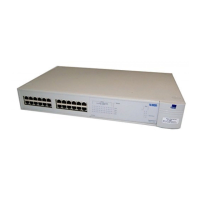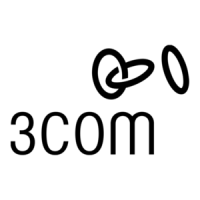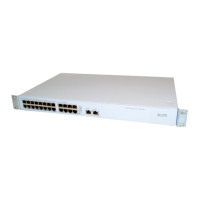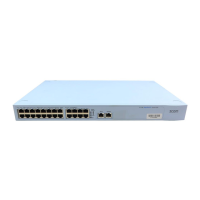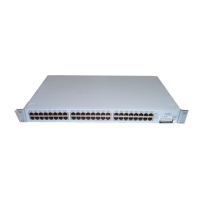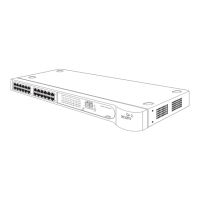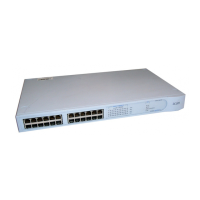178 C
HAPTER
6: V
IRTUAL
LAN
S
(VLAN
S
)
To set up the configuration shown in Figure 36:
1
Configure the endstations attached to the left Switch 1100 so that they
belong to VLANs 1, 2 and 3.
2
Configure the endstations attached to the right Switch 1100 so that they
belong to VLANs 4, 5 and 6.
3
Enable 802.1Q learning on the left Switch 1100 using the 802.1Q VLAN
Learning listbox on the Advanced Stack Setup page of the web interface.
4
Enable 802.1Q learning on the right Switch 1100 using the 802.1Q VLAN
Learning listbox on the Advanced Stack Setup page of the web interface.
5
Enable 802.1Q learning on the Switch 3300 using the 802.1Q VLAN
Learning listbox on the Advanced Stack Setup page of the web interface.
6
Configure the Layer 3 Module to allow communication between VLANs 1
to 6. For more information, refer to the user documentation supplied
with the Layer 3 Module.
7
Connect port 26 of the left Switch 1100 to port 1 of the Switch 3300.
8
Connect port 25 of the right Switch 1100 to port 3 of the Switch 3300.
Connecting to a
Legacy Network
The example shown in Figure 37
illustrates a Switch 1100 that has been
connected to a legacy network using a VLT tagged link:
■
The legacy network supports two VLANs (VLANs 1 and 2), and these
can communicate using the connections (one per VLAN) between the
Switch 3000 10/100 and the router.
■
The endstations attached to the Switch 1100 use 802.1Q tagging and
belong to VLANs 1 and 2. They can communicate directly with all the
endstations attached to the Switch 1000 — they do not need the
router because they belong to both VLANs.
To set up this configuration:
1
Configure the VLANs on the Switch 1100:
a
Use the VLAN Setup page of the web interface to define VLANs 1 and
2. Note that the Local ID of the VLAN corresponds to the VLAN ID on
the legacy network — therefore the Local ID of VLAN 1 must be 1,
and the Local ID of VLAN 2 must be 2.
